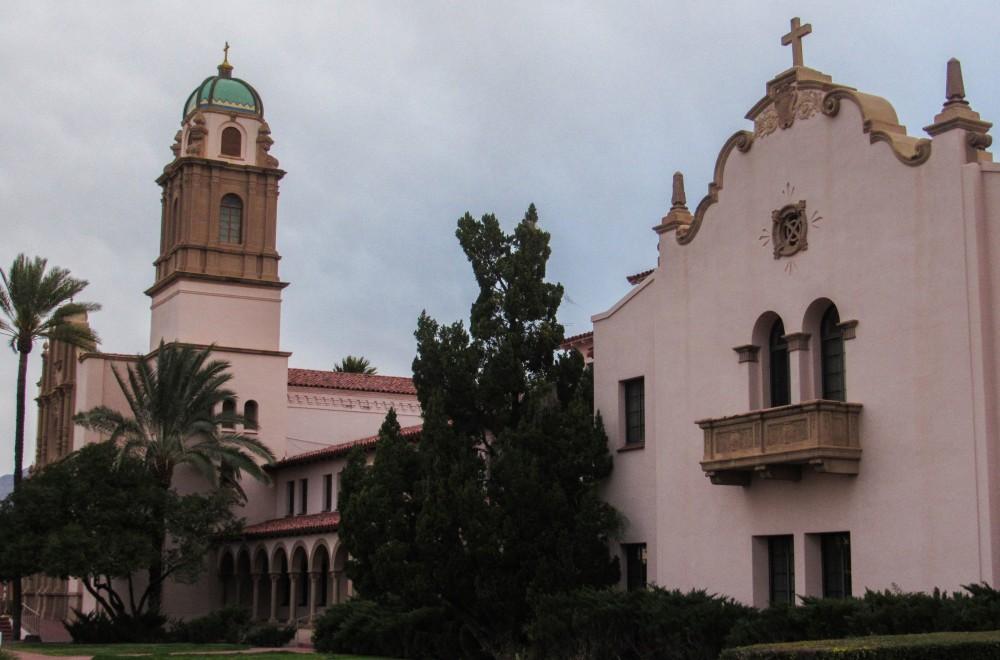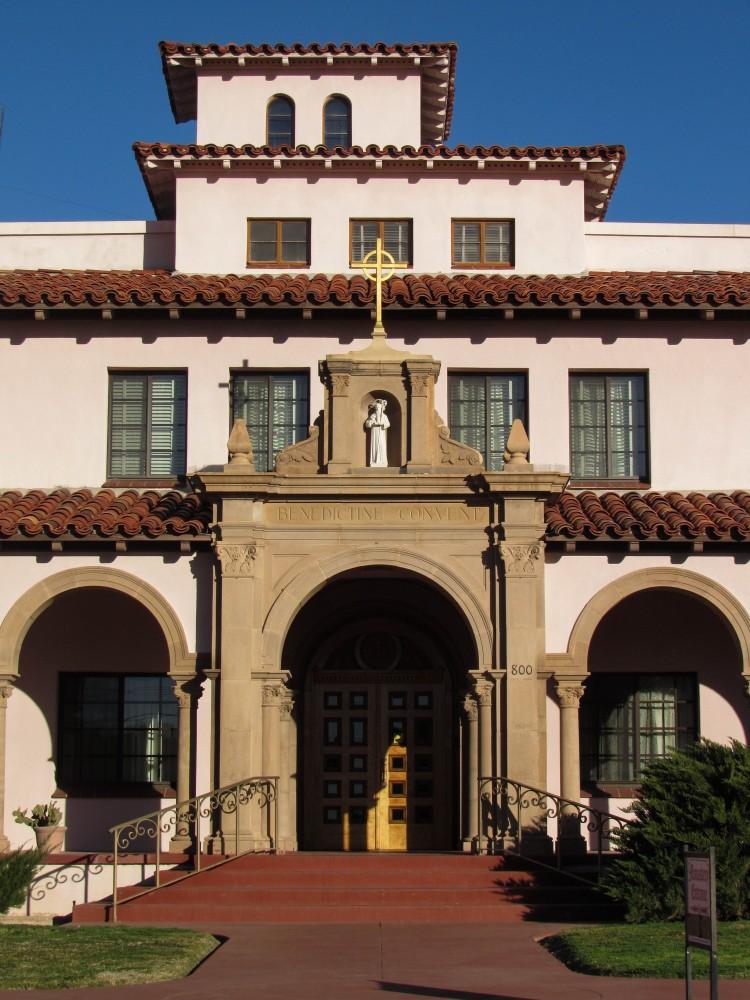Local developer Ross Rulney is encountering challenges from the community in developing luxury apartments on his newly-acquired property: the site of an early-1900s-era Benedictine Monastery, heralded as a place of significance by the Tucson community.
The sale of the monastery may depict a sign of the times. A decline in the Sisters of Perpetual Adoration’s numbers led to the decision to consolidate and move to the order’s motherhouse in Clyde, Missouri.
The leader of the Tucson sisters, Sr. Joan Ridley, sold the seven-acre property to Rulney in good faith. The sale came with a mutual understanding of the importance in preserving the monastery’s architectural and spiritual significance to its community. Despite this, members of the Miramonte neighborhood, as well as the greater Tucson community, are concerned for the historical structure.

Between 1939 and 1940, Tucson architect Roy Place constructed the monastery — designed in “Spanish eclectic” style — for the Benedictine Sisters of Perpetual Adoration, who were invited to Tucson in 1935 by the Bishop of Tucson, Right Reverend Daniel Gercke.
Place is known for other historical assets in Tucson, including the Pima County Courthouse and several notable buildings on the University of Arizona campus.
Rulney has actively taken steps to ensure the exterior features of the chapel are preserved when endeavoring to construct luxury apartments on the site. He is contracting with Poster Frost Mirto, a local team known for its work on historical Tucson architecture.
“Poster Frost and Mirto are lead preservationists when it comes to architecture, so they are leading the project,” Rulney said in a phone interview. “He has more experience with Roy Place than anybody.”
However, after meetings between Rulney and community stakeholders, including Sr. Ridley, Ward 6 Councilman Steve Kozachik and Ruth Beeker, neighborhood advocate and former Miramonte Neighborhood association member, concerns about the future of the property have been realized.
“We made it clear. The one thing we did not want was university housing,” Beeker said.
RELATED: Regents approve new Honors Complex, uphold free speech on campus
While Rulney said he has worked with the neighborhood to provide them a voice in how the luxury apartments would be built, he also said the student housing route would be taken if the neighborhood association would not help him obtain a Planned Area Development — a make-your-own-zone process that would allow him to construct the more desirable “high-end” apartments.
Rulney would not need to rezone in order to build university housing, but he does need city council approval to secure a PAD.
And city council approval entails neighborhood consent.
“If the … necessary entitlements are approved, then we will develop a high-end residential community,” Rulney said. “And if not, then we will pursue a student-housing development within the current entitlements.”
Current entitlements allow for 40-foot buildings containing 220 units — approximately 880 beds that could be slated for students, if Rulney were to go ahead and sell 51 percent ownership to a Texas-based student housing developer; Rulney declined to share who that developer was.
Sam Behrend, vice president of the MNA, described the logistics during a MNA meeting on Feb. 14.
“If he couldn’t get the neighborhoods to help him get approval by the city for this Planned Area Development where he could make his own zoning and have 33 one- and two-bedroom luxury apartments … then he had a deal on the table with a student housing developer who would buy him out,” Behrend said. “The implied threat is that if we don’t go along with his plans, he’ll just sell out to this other guy and make a lot of money, and we wouldn’t be happy about that.”
While luxury apartments are preferred by the community over student housing, concerns about the increase in traffic, noise, height of the buildings and the anticipated eyesore of parking options to support the housing are cause for contention.
“Parking garages by law have to be lit-up 24 hours,” said David Raichlen, president of the MNA, at the Feb. 14 meeting. “People [living near UA parking garages] were complaining that it never gets dark anymore at their house.”
The decision-making process for the community has come down to protecting the monastery at any cost, versus attempting to preserve some aspects of the current neighborhood aesthetic. Rulney said it would be in the community’s best interest to help him obtain the PAD.
“I think they — based on the comments that I’ve heard, based on the meetings I’ve attended — absolutely want to work with me because they absolutely do not want a student-housing product,” he said. “Now, there are things, you know, we’re going to have to agree on, height … the product still has to work financially. And in order for me to do so, I need added flexibility of use for the existing building that I don’t have.”
The community has expressed its frustration about the use of the building, now that it has been sold to a developer, through several guest letters to publications like the Arizona Daily Star and the Tucson Sentinel.
Some claim that the City of Tucson or even the University of Arizona could have done more to make sure the monastery wouldn’t be sold to a developer; Kozachik echoed these frustrations.
“He has chosen one of most sensitive properties in the city to rezone,” Kozachik said. “The thing is a historic landmark revered by a lot of people with religious affiliation. It’s also immediately adjacent to a single family residential neighborhood across the street from another residential neighborhood, Sam Hughes, and as matter of fact … the Benedictine is listed as one of their historic assets.”
In an interview for the Star conducted by Johanna Willett, Rulney confirmed, “The monastery is a historic treasure, and I will work to preserve the exterior of the building, while taking great care with interior improvements.”
RELATED: Honors complex inches forward
Rulney declined to share which of the two development routes he would prefer to take, but said what he sees is best for the community.
“I don’t know if I want to give my preference, but it is a strong preference of the neighborhood that it become a high-end residential versus student housing, and the neighborhood is opposed to the student housing,” he said.
“So what I’m trying to do is accommodate their concerns and move forward with what they’d like to see … including uses for the existing building, allowing restaurant and retail and a boutique hotel if that’s the direction I’d go in. Those are not allowed currently, but those would be a part of the PAD.”

The MNA is deciding what to do next.
“If we oppose the PAD, I don’t know what will happen … but it’s time for us to decide what our bottom line is and take a position,” Behrend said. “With this many beds, there’s going to be a lot of students living there anyway, so how different is student housing going to be?”
Rulney said in an email that he would “probably not” keep Poster and associates on should he choose to pursue student housing.
Follow Ian Green on Instagram









